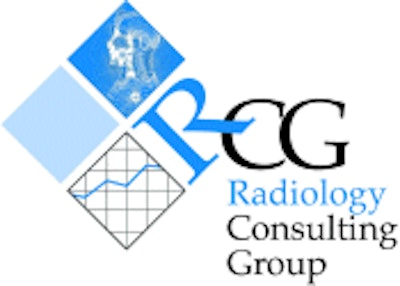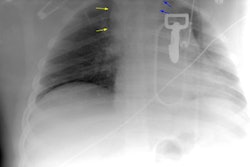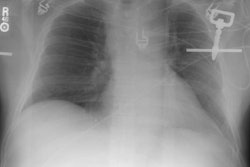
AuntMinnie.com is pleased to present the 12th in an ongoing series of practice management articles contributed by the Radiology Consulting Group in Boston. This monthly series addresses topics and issues of concern to radiology administrators and business managers.
By Richard TerrassRadiology Consulting Group

The most visible relationship between education and recruiting exists in radiology departments that are clinical sites for medical imaging programs. As students progress through their clinical rotations, managers get a chance to evaluate them as potential future employees and the students get to evaluate the department as a potential employer.
Thus, the graduates of these programs become the primary pool of candidates for recruiting new entry-level employees. This connection is familiar to front-line managers who are products of this system. This process works well most of the time; however, it is prone to periodic fluctuations that result in either an oversupply or shortage of technologists.
Education’s return on investment
It can be difficult to accurately quantify the financial impact of an educational program on either a department’s or an institution’s bottom line; however, the ability to quantify the financial impact is vital to achieving leadership buy-in given the shrinking financial pie in healthcare.
Asking the question, "Why invest in a specific educational program or initiative?" provides an opportunity to move beyond generalities to a "hard" return on investment (ROI) measured in terms of bottom-line impact. This question needs to be asked and answered if any proposed educational program or initiative will require a significant investment of resources and leadership buy-in.
In our department, we have found that investing in education has provided measurable ROI in the following strategically important indicators:
- Better-educated workforce
- Improved ability of workforce to adapt to change
- Improved morale
- Increased access to professional growth opportunities
- Increased retention
- Improved recruiting
Investments made in providing educational opportunities allow employers to develop employees to meet both current and future needs. Employers that provide and encourage increased access to educational opportunities can expect to reap the benefits of a better-educated workforce that is better adapted to change. Continued access to education throughout employment provides employees with the skills needed to meet operational challenges, and provides clear incentives to stay and build a career.
Recruiting and retention
Another benefit of the continually educated workforce is an increase in both the quality and diversity of the internal applicant pool, especially for management opportunities. As employees see their employer provide the incentives and opportunities for advancement within the organization, employee morale improves.
Good morale is contagious. It is vital to both recruiting and retention. It increases word-of-mouth referrals of candidates, and ensures that current employees will want to stay. Poor morale also spreads by word of mouth. Employers should assume that employees who leave for perceived "greener pastures" in other institutions would not hesitate to share their feelings about their past employer with their new co-workers.
Students are no less adept at reading the morale of those around them. By the time a student graduates from a medical imaging program, he or she will be fully versed in the morale of every one of the program’s clinical affiliates.
Educational investment vs. bonuses
Investing in education for your workforce has strategic advantages over more traditional recruiting incentives such as sign-on, longevity, and referral bonuses. It is interesting to note that research on why employees choose to stay with an employer shows that financial considerations are seldom a primary factor.
The top five reasons identified by Beverly Kaye and Sharon Jordan-Evans in their book, Love 'Em or Lose 'Em : Getting Good People to Stay (Berrett-Koehler, San Francisco 1999), and reported in Business Week Online (Why Guess What Will Keep Your Employees? Ask Them!, January 7, 2000) are, in order:
- Career growth, learning, and development
- Exciting work and challenge
- Meaningful work, making a difference and a contribution
- Great people
- Being part of a team
Fully 90% of respondents listed one or more of the first three items as one of the top reasons they stayed with their current employer. It is interesting to note that fair pay and benefits ranked 11th -- and that job security ranked 16th.
Healthcare is a business. Hospitals and departments must anticipate and adapt to changing market conditions in order to compete and survive. The key asset that an organization needs to succeed in this environment is intellectual capital. Employees who are attracted to an institution, and choose to stay there to take advantage of educational incentives, are the kind of highly motivated employee that every institution needs in order to meet operational challenges and gain a competitive edge in their marketplace.
By Richard TerrassAuntMinnie.com contributing writer
November 9, 2001
Richard Terass is a consultant with RCG, as well as education coordinator of radiology quality management and education at Massachusetts General Hospital in Boston.
Related Reading
How to avoid PACS buyer’s remorse, September 27, 2001
Strategic plan allows smooth transition from film library to image service center, August 29, 2001
Site development is key to marketing radiology on the Web, August 9, 2001
e-Radiology enhances marketing opportunities, July 24, 2001
Proper training can reduce errors in PACS implementation, July 4, 2001
Copyright © 2001 AuntMinnie.com



















